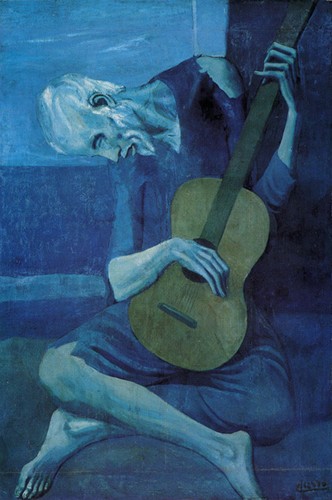***
If the British Museum has a presiding deity, it is John Keats. Oh, Cavafy puts in an appearance, and Homer, and it's hard to see the Assyrian friezes depicting the seige of Lachish without thinking of Byron, or gaze on the colossal head of a Pharoah without remembering Shelley, but it's Keats who comes most to mind as one wanders through the Greek galleries [1]. It's not just the thrill of finally seeing the long-promised Elgin Marbles, it's the lines from Ode on a Grecian Urn, which keep repeating and repeating in your head as you roam the exhibits.
Because it's all there, isn't it? The green altar with its mysterious priest, the loth maidens, the bold lovers, the little town by river or sea-shore. To wander through these galleries is to hear, at last, Keats' unheard melodies -
 the swelling adagio of grief as the warriors carry the body of their comrade off the battlefield, the furious allegro of the leaping amazon,
the swelling adagio of grief as the warriors carry the body of their comrade off the battlefield, the furious allegro of the leaping amazon,  the gavotte of pride in a young boy's heart as he rides in his first procession and the mellow andante in the heart of the bystanders as they admire the boy's beauty - all the fierce and solemn music of an unforgettable age. This is poetry - these clean yet fluid lines depicting a reality that transcends itself, this blending of energy and grace, this balance of the immediate and the timeless. There is something almost cinematic about the way these sculptures move us; something about the breathtaking realism of these depictions their individuality, their attention to detail. To see a centaur twisting in pain in one of these friezes is to find yourself suddenly on the plain of war, hearing the screams of the dying and wounded, feeling the adrenalin of battle pulsing through your blood.
the gavotte of pride in a young boy's heart as he rides in his first procession and the mellow andante in the heart of the bystanders as they admire the boy's beauty - all the fierce and solemn music of an unforgettable age. This is poetry - these clean yet fluid lines depicting a reality that transcends itself, this blending of energy and grace, this balance of the immediate and the timeless. There is something almost cinematic about the way these sculptures move us; something about the breathtaking realism of these depictions their individuality, their attention to detail. To see a centaur twisting in pain in one of these friezes is to find yourself suddenly on the plain of war, hearing the screams of the dying and wounded, feeling the adrenalin of battle pulsing through your blood.
This is poetry, I said, but it is also history. For to gaze upon these sculptures is also to see the slow erosion of memory, to see how time erases us, how little by little each treasured detail is lost, until what was nameless to start with becomes faceless, deformed, and what is left is only a museum's worth of abstract gestures - the raising, in defiance, of a broken-off arm, or an eloquent glance backwards, emerging from a wasteland of scuffed rock.

[1] It should come as no surprise to readers of this blog that I spent most of my time at the British Museum in the Greek and Roman sections. And while we're on the subject, will someone please explain to me why the public imagination is so taken with the Egyptians? The crowds in the Egyptian gallery outnumbered those in every other part of the Museum three to one, so that walking through the Egyptian section meant you were elbowing your way through a pressed rank of tourists, or dodging your way through a crossfire of photo ops. Is it the Mummy movies? Is it Tintin? Seriously, what's the fascination?




7 comments:
Oh I miss London now :(
I spent (almost) all my time there in the galleries!
I found it amusing how the Brits were so defensive about their acquisition of the Elgin marbles!
And it is those mummies I tell you!
Ok, ok you're an art genius. Now write about the Champions League final.
Now I really do have to dig up that bit from Cotillion, don't I, where the heroine, aided by a reluctant hero, helps a feeble-minded Earl elope with the daughter of a Cit, and they all go to view the Elgin marbles because it's a safe place where they can make plans and run into nobody they know.
Are you sure they didn't have photos of Carla Bruni in the Egyptian section? You know, those photos ...
-RS
Szerelem: Ya, the defensiveness was a little bizarre. Specially since you'd think the same would apply to everything else in the collection.
??!: see above
SB: Hmmm...can't say I know that one. Me, I was thinking Hitchcock. Remember Blackmail?
RS: Actually, I don't know what photos you're talking about, though I'm fairly sure they had no photos of Ms. Bruni in the section.
oh oh oh
space bar reads heyer. :)
tangled: of course i do! why 'oh oh oh' though?
Post a Comment